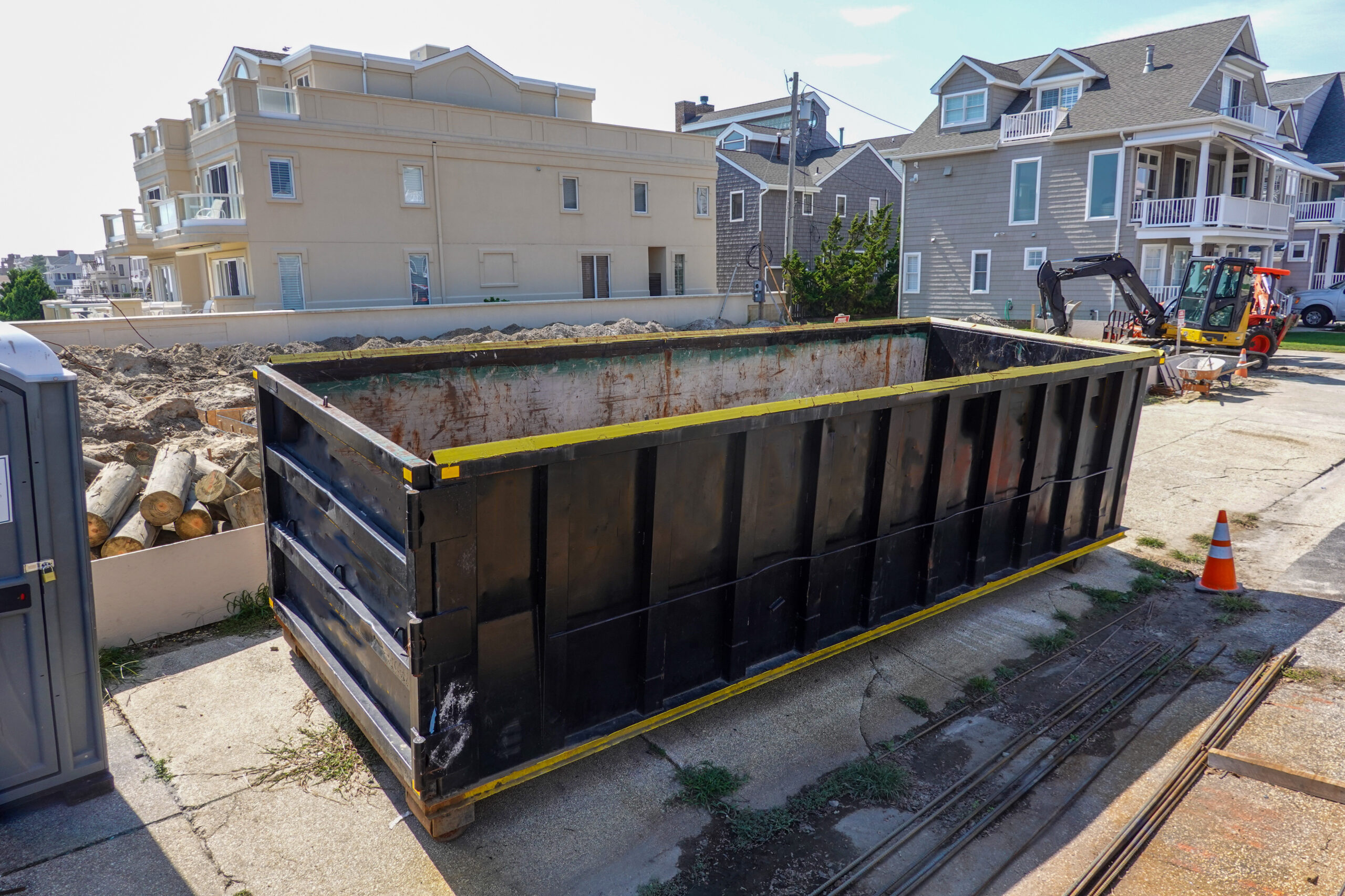When tackling a construction project, whether big or small, one of the most crucial decisions you’ll make is how to manage the waste created along the way. It’s easy to overlook this aspect when you’re focused on the exciting work ahead, but trusting that a proper dumpster rental can streamline your process can save you time and headaches. Imagine trying to complete a renovation or demolition without a plan for all the debris; it would be like running a marathon with no finish line in sight. That’s where a construction dumpster comes into play—providing you with a reliable solution to keep things organized, efficient, and stress-free. Let’s explore how to find the right sizes and prices for your dumpster rental needs, so you can stay on track with your project and keep your space clutter-free.
A construction dumpster is a large container specifically designed to hold debris and waste generated from construction, renovation, or demolition projects. You can rent one by contacting local waste management companies or services that specialize in dumpster rental, where they will provide you with options based on your project’s size and waste volume.
Choosing the Right Construction Dumpster Size
Selecting the right size of dumpster is more than just a simple choice; it can significantly impact the efficiency of your project. Each project varies in scope and waste generation, making it crucial to break down your needs before committing to a specific dumpster size. Imagine standing at the beginning of your project, whether it’s a home renovation or a commercial build, and envisioning how much rubble and refuse you’ll create throughout the process. Without an accurate estimate, you may find yourself scrambling for extra space or wasting money on unnecessary rental time.
To get started, let’s take a closer look at your project’s scale.
Assess Your Project’s Scale
The first step in choosing the right dumpster is assessing the overall scale of your project. For instance, a small home renovation might only require a 10-yard dumpster, which can accommodate about three pickup truck loads of debris—ideal for projects like remodeling a bathroom or clearing out old furniture from a basement. Larger operations like complete building renovations or demolitions may need something bigger, like a 40-yard dumpster, which is designed for hefty commercial jobs where large amounts of waste accumulate all at once.
However, it’s not just about knowing how big your project is; estimating the volume of debris is equally important.
Estimate the Volume of Debris
As you plan, remember that construction debris can quickly accumulate. For example, if you’re embarking on a kitchen remodel, expect around 15 cubic yards of waste generated. A 20-yard dumpster would provide ample space for this task while ensuring you have some leeway for unexpected debris during renovations. Alternatively, if you’re tackling multiple rooms or an extensive job site, consider a 30-yard dumpster, which can hold even more material and prevent interruptions during work progress.
To navigate these choices effectively, consulting with professionals can provide clarity on what size best suits your needs.
Consult with Professionals
One valuable tip is to speak directly with professionals from rental companies who specialize in construction waste management. They can offer insights tailored specifically to your project type and its demands. Their experience will save you from underestimating or overestimating the necessary capacity. Additionally, many rental services now feature online calculators that help prospective renters accurately gauge their waste volume based on various parameters like project type and estimated debris weight.
With this understanding in place regarding project scope and waste volume, you’re equipped to make informed choices as you move forward in planning your rental arrangement. From here, we can take a look at how to factor costs into your overall strategy so that every dollar spent maximizes the value of your investment.
Cost Considerations: Budgeting for Rental Fees
Understanding the costs associated with renting a dumpster not only helps in planning your budget but also empowers you to make informed decisions. Start with the rental duration. Most services offer rentals anywhere from 7 to 10 days as part of their standard package, but if your project drags on longer, be prepared; those extra days will incur additional charges. It’s almost like renting an apartment—once you move beyond the initially agreed timeframe, additional costs start accumulating.
Another significant factor to consider is the weight limits of each dumpster size. Every rental service has specific weight limits, and exceeding them can lead to hefty overage fees. For example, a standard 20-yard dumpster typically accommodates up to 4 tons of waste. If your project involves heavy materials like concrete or brick, it’s wise to keep this limit in mind while loading.
As you plan your budget, account for these three main components:
- Rental Duration: Standard rental fees cover approximately one week; most services charge extra for each additional day.
- Weight Limits: Be mindful that going over the per ton limit of your chosen dumpster may result in costly penalties.
- Location: Rentals might differ based on where you’re located; urban areas often see higher fees due to increased demand and local regulations. In contrast, rural locations might come with surcharges for transportation.
Hidden Fees to Watch Out For
Now, let’s shift gears and talk about hidden fees—the pesky little surprises that catch many off guard when they rent a dumpster. It’s crucial to scrutinize your agreement carefully so you don’t face unexpected charges later. Delivery fees could show up as additional costs on your invoice along with pickup fees, which are charged when the dumpster is collected after use.
“I was shocked at the end when I received my invoice,” shared one satisfied customer of Tiger Sanitation. “It turned out I’d been charged extra because my dumpster wasn’t filled correctly and had too much loose material.”
To avoid such pitfalls, double-check how you fill your dumpster to ensure that you’re adhering to any guidelines provided by the rental company. Furthermore, landfill fees can sneak in based on the type of waste being disposed of; hazardous materials often incur stricter fees.
Always communicate openly with your service provider about potential pitfalls during the rental process. Understanding these factors allows you to budget wisely and keep those unexpected costs at bay, ensuring that your construction project runs smoothly without any financial hiccups along the way.
With all these considerations in mind regarding cost and budgeting, it’s essential to explore how effective disposal can contribute positively not just to your project, but also to broader environmental goals.
Efficient Waste Management and Environmental Solutions
Effective waste management creates a direct line between how we handle our refuse and the health of our environment. The choices we make when disposing of waste can have significant implications on local ecosystems, air quality, and even the climate. Through simple proactive measures, we can ensure that we’re not just throwing away materials but are also giving them a second purpose through recycling or proper disposal.
One powerful step towards efficient waste management is the segregation of waste. By sorting your waste into recyclables, hazardous materials, and general debris, you help reduce the amount being sent to landfills and often lower your rental costs. According to the EPA, an astonishing 75% of waste is recyclable, yet only about 30% actually makes it into recycling bins. Just imagine the potential impact if everyone committed to actively separating their waste!
This simple act encourages industries to recycle more efficiently and supports the circular economy by ensuring resources are reused rather than discarded.
Moreover, partnering with eco-friendly providers can amplify these efforts. When looking for a dumpster rental service, consider those who prioritize sustainability practices. Such companies may offer additional services like recycling support or collaborations with local recycling centers. Some businesses provide discounts for customers who pre-sort their recyclables—making responsible disposal beneficial for both the environment and your wallet.
Embracing Innovative Solutions
As we embrace sustainable practices, there’s a wealth of innovative solutions emerging in waste management. From composting food scraps to setting up community recycling programs, individuals and communities are finding effective ways to minimize waste generation and enhance environmental responsibility. Composting turns organic waste into valuable fertilizer instead of filling up landfills—creating a cycle that benefits gardens and reduces methane emissions from decomposing trash.
So why choose a specific provider over another?
This choice is integral because some organizations do more than just manage trash; they become partners in sustainability efforts. Researching each provider’s commitment to environmental solutions helps you align with those whose values mirror your own. Local companies like Tiger Sanitation have taken strides towards integrating eco-conscious practices into their operations. For residents around San Antonio, partnering with local providers ensures your waste is managed in a responsible and community-oriented way.
Engaging in efficient waste management isn’t merely a personal benefit—it’s community upliftment for everyone involved.
By aligning our practices with environmentally conscious providers and embracing innovative solutions, we open doors to better choices that can transform both personal spaces and broader surroundings for the better.
Options for Residential and Commercial Projects

When it comes to waste management, choosing the correct dumpster size is key. For residential projects, smaller dumpsters ranging from 10 to 20 yards are particularly suitable. These are ideal for tasks like home renovations, spring cleaning, or landscaping where you might need to dispose of more than your regular trash. Imagine tackling a small kitchen remodel: a 15-yard dumpster would provide the perfect size to handle all debris—from cabinets and countertops to old appliances and flooring.
Alternatively, if you’re cleaning out your large garage or attic, that same size would comfortably accommodate large amounts of junk without overflowing. It’s about efficiency; having enough space to collect all your unwanted items means less time worrying about hauling materials off yourself.
Commercial Projects
For larger-scale endeavors such as office building renovations or new construction sites, a different approach is necessary. This brings us to commercial projects, where 30 to 40-yard dumpsters are typically required. These containers can handle substantial amounts of debris from demolition materials, drywall, and other construction refuse. It’s remarkable how much waste can accumulate on a busy worksite; therefore, opting for larger containers makes practical and economic sense.
Ensuring the right size for these projects not only enhances productivity by minimizing downtime but also maximizes the overall efficiency of the operation.
However, there are essential considerations for both residential and commercial rentals as they differ in several practical aspects.
- Permit Requirements: In many cases, residential areas may require specific permits if the dumpster will be placed on public property or roadways. This often necessitates forethought before ordering that dumpster.
- Accessibility: On commercial sites, logistics play a bigger role as multiple dumpsters or frequent pickups may be necessary due to the sheer volume of material generated. Discussing your specific needs with your service provider ahead of time ensures that everything goes smoothly.
- Flexibility: Residential projects typically benefit from shorter rental periods since they usually generate less waste in a concentrated timeframe. Conversely, commercial projects often demand longer rental durations with higher weight limits to accommodate ongoing operations.
By considering these factors, you can effectively choose the right dumpster service that meets your project’s specific demands while contributing to an organized waste management process. As we explore further, understanding what happens during the rental process will help streamline your experience even more.
What to Expect When Renting a Dumpster
Navigating the world of dumpster rentals doesn’t have to feel daunting. Understanding the process and expectations can simplify things significantly, turning what might seem like a complex task into a straightforward experience for effective waste management.
Delivery and Pickup
One of the first things to know is how delivery and pickup work. Most companies offer flexible scheduling options—this means you’ll typically find that delivery can occur within 24 to 48 hours after placing your order. The excitement builds as you anticipate the arrival of your dumpster, an essential partner in your project.
As for pickup, it’s not as simple as just waving goodbye; you usually need to give them a call at least 24 hours ahead. This heads-up allows the rental company to plan accordingly for their logistics. Also, keep in mind local regulations; inquire if the rental service takes care of any necessary permits for your project.
“A little preparation goes a long way,” as they say! Check local guidelines for restrictions related to dumpster placement—certain areas may require permits or specific placement procedures.
Understanding the Agreement
Diving into the rental agreement is critical—it’s your roadmap for the rental experience. It’s not just about picking up a container; reading through all terms and conditions ensures you’re aware of key aspects such as weight limits, what can go inside, and prohibited items.
Ignoring these guidelines can lead to unexpected surprises, like hefty fines or penalties for disposing of hazardous materials like asbestos or flammable substances. Not only does this impact your budget negatively, but it could also bring about legal issues—so a careful read-through is worth your while!
Customer Support
Lastly, don’t overlook customer support. You want to have a smooth experience from start to finish, and good customer service plays a significant part in that equation. Look for companies with positive reviews highlighting their responsiveness and willingness to help customers with questions or concerns throughout the rental period.
Having trustworthy customer support can facilitate everything—from clarifying any doubts before you finalize rent agreements to tackling potential hiccups during your waste removal project. In my experience, knowing there’s someone available when you need assistance brings great peace of mind.
By understanding these key points about renting a dumpster, you’ll feel more empowered and confident in managing your waste disposal needs efficiently.
This understanding sets the stage perfectly for diving into practical advice that will help streamline your construction efforts even further.
Tips for DIY Construction Projects
Plan Your Disposal Needs Early
Start by estimating the amount of waste you’ll generate before you even lift a hammer. This isn’t just a guessing game; it’s a calculated decision based on your project scope. Getting the dumpster that’s just right does wonders for maintaining flow during your renovation. It’s wise to rent a slightly larger dumpster than your initial estimate—this way, you’ll have extra space for unexpected debris and avoid overflow. An overflowing dumpster isn’t just inconvenient; it can lead to additional charges and complications down the line.
Now that you’ve estimated your needs, let’s discuss how to make efficient use of dumpster space. Often overlooked, this aspect can be critical in saving money and time during your project.
Efficient Use of Dumpster Space
To optimize space in your rental dumpster, consider breaking down large items before disposal. For instance, when removing tiles or drywall, stack them flat rather than putting them in whole or haphazardly. Doing so allows more material to fit neatly within the available volume. This not only saves you trips or extra rentals but also makes the overall cleanup process smoother.
While planning and efficient waste management are necessary, one cannot stress enough the importance of safety first throughout this endeavor.
Safety First
Always wear protective gear when handling debris—this is non-negotiable if you want to minimize injuries. Whether you’re donning gloves, safety glasses, or a hard hat, these elements of protection create a safer work environment. Many DIY enthusiasts have shared their experiences reflecting on how crucial these precautionary measures are; fewer accidents occur simply by being proactive about safety.
And remember, beyond just personal safety, having a plan that encompasses both waste disposal and safety ensures your DIY project progresses without unnecessary delays or complications.
As you dive into your projects armed with these tips, you can focus more on creativity while ensuring that logistics remain seamless. Don’t forget to visit us at choosetiger.com for more insights and specific renting options tailored to your needs!
In summary, effective planning along with a strong emphasis on safety will pave the way for successful and enjoyable DIY construction projects.




